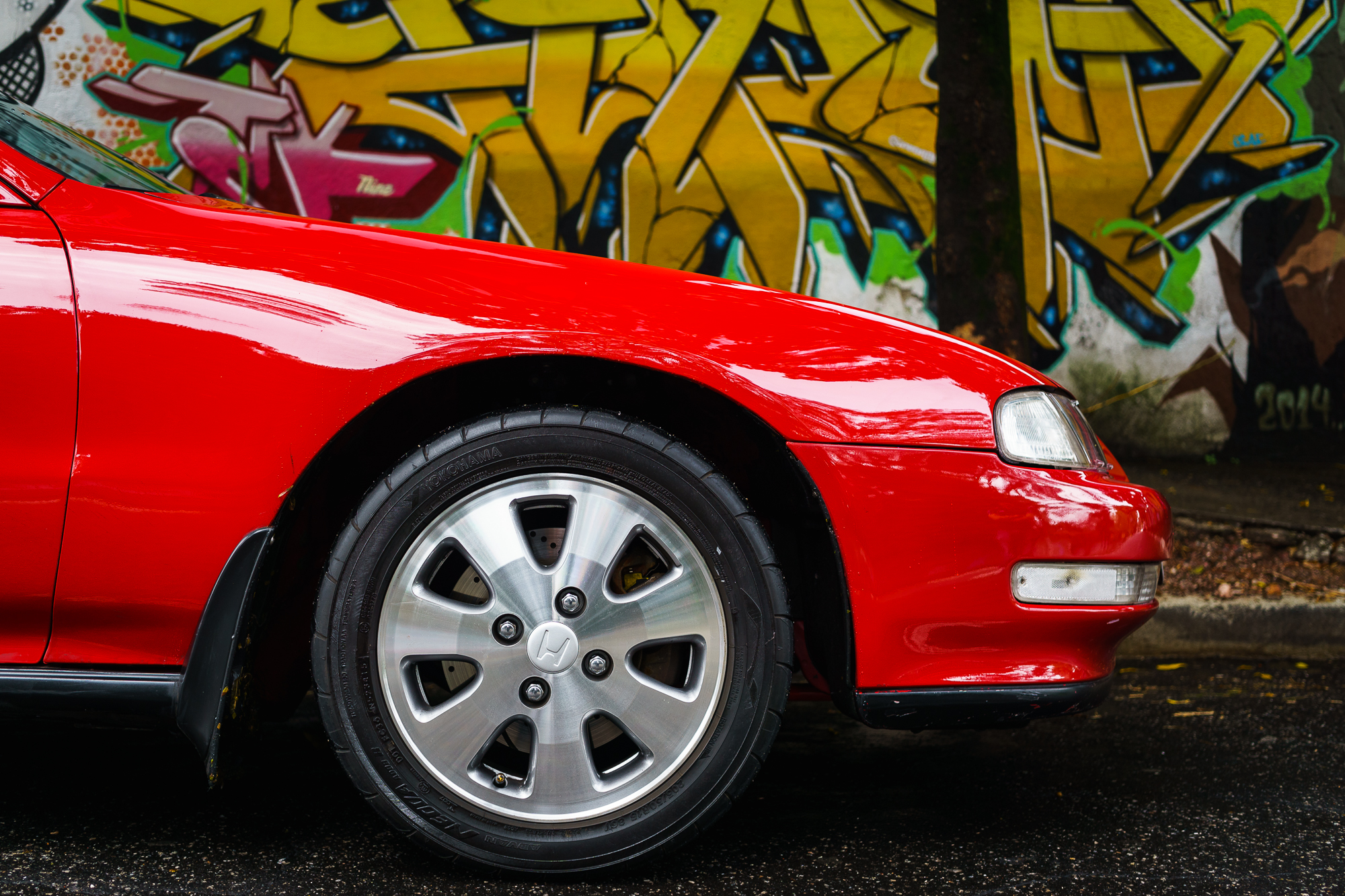The Authentic Car Enthusiast
You know those high school essays that begin with the dictionary definition of a word? The ones where the word is supposed to define the essay, but really doesn’t because it’s used by a 14-year-old twerp looking for an easy A? Well get ready, because this is a dictionary definition piece.
Authenticity (Philosophy): The degree to which one is true to one’s own personality, spirit, or character, despite external pressures.
I think authenticity is one of those minefields in any subculture (car culture included) which is hard to define, and even harder to defend. Just trying to call someone inauthentic, or authentic invokes such a strong response that in many cases it’s just better to keep one’s mouth shut. However, I’ve decided to wade into the authenticity argument, because Juliano, the owner of the fourth generation Honda Prelude pictured above, may be one of the most authentic gearheads out there.
Cars have been a part of his life even before he understood what a car was. His first word? “Car.” First car? A 15-year-old Dodge Charger. First post collegiate job? Writer for Brazil’s largest car magazine – Quatro Rhodas. At one point in his life he simultaneously assisted Marco de Bari in studio (arguably Brazil’s best car photographer), managed the post-processing work on Marco’s images, and moonlighted as a freelance writer for Jalopnik Brazil. Currently, aside from running one of Brazil’s largest automotive websites, he’s building a 550 horsepower track car out of a Dodge Dart, and is working on importing a built engine for his modified Honda Prelude.
You would expect someone who is this accomplished to be slightly conceited (not without reason either), but he really isn’t. During our two-hour long conversation, he joked about stanced cars, told me about how a mistake in his business office resulted in him lapping the Nürburgring in an Audi R8, and carefully explained to me why the 4WS Honda Prelude is one of the best cars ever. And that’s the thing – the reason why Juliano is authentic is because his life is true to his love of cars.
However, the interesting thing is that Juliano’s daily driver is not his Prelude, or even his Dart. In fact, he normally drives one of his parent’s old cars. Driving a worn econobox on a daily basis hardly seems like something a “truly authentic” car enthusiast would do. And that brings in the question of if Juliano is really authentic. How can one be true to car enthusiasm if they actually opt to drive cars that are made to carry people from point A to point B with as detached an experience as possible?
He had a very interesting response to that. According to Juliano, the “difference between car enthusiasts and people who buy cars for status is their experience with cars. That [experience] is what sews the map of car culture all together.” Juliano’s “experience” as he calls it, is that inherent irrational connection with the machine that car enthusiasts have. It is this emotional response to cars that draws them to the vehicle despite rationally better options.
I see it very regularly. In several of my conversations for past pieces, when I ask people why they like cars, they generally give one of three responses. Its either “it feels right” or “I have gasoline in my veins”, or “I don’t know – it’s irrational but I like it.” And that experience has been consistent across all subsets of car culture – from the classic car guys to drifters to lifted trucks.
And that’s what I really like about Juliano’s idea. It gets to the heart of what makes an authentic car enthusiast. It doesn’t have to do with what car you own, assuming you own a car. It doesn’t have to do with your age. It’s even pretty agnostic to how in deep you are involved with mainstream car culture, or even what subculture you ascribe to. If you have that personal ingrained connection to cars and you are true to that connection, then you are an authentic car enthusiast. And according to that metric, yes, Juliano is an extremely authentic car enthusiast.
More pictures can be found here. Juliano's website, Flatout, can be found here (Portuguese).

